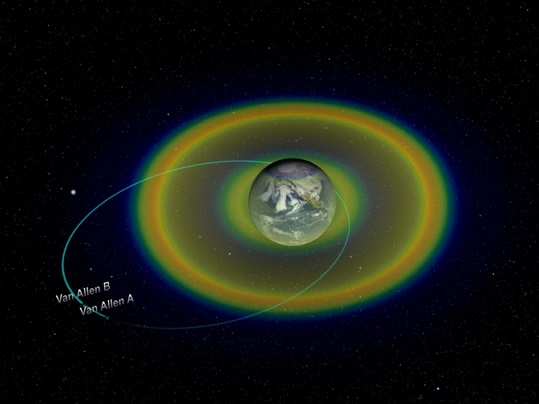

| Visitors Now: | |
| Total Visits: | |
| Total Stories: |

| Story Views | |
| Now: | |
| Last Hour: | |
| Last 24 Hours: | |
| Total: | |
Scientists Have Discovered a Massive Particle Accelerator in the Heart of One of the Harshest Regions of Near-Earth Space
Friday, July 26, 2013 2:07
% of readers think this story is Fact. Add your two cents.
Scientists have discovered a massive particle accelerator in the heart of one of the harshest regions of near-Earth space, a region of super-energetic, charged particles surrounding the globe called the Van Allen radiation belts.
Scientists knew that something in space accelerated particles in the radiation belts to more than 99 percent the speed of light but they didn’t know what that something was.
New results from NASA’s Van Allen Probes now show that the acceleration energy comes from within the belts themselves.

Recent observations by NASA’s twin Van Allen Probes show that particles in the radiation belts surrounding Earth are accelerated by a local kick of energy, helping to explain how these particles reach speeds of 99 percent the speed of light.
Image Credit: G. Reeves/M. Henderson
Particles inside the belts are sped up by local kicks of energy, buffeting the particles to ever faster speeds, much like a perfectly timed push on a moving swing.
The discovery that the particles are accelerated by a local energy source is akin to the discovery that hurricanes grow from a local energy source, such as a region of warm ocean water.
In the case of the radiation belts, the source is a region of intense electromagnetic waves, tapping energy from other particles located in the same region.

Two swaths of particles surrounding Earth called the radiation belts are one of the greatest natural accelerators in the solar system, able to push particles up to 99% the speed of light. The Van Allen Probes launched in August 2012, have now discovered mechanisms behind this acceleration. Image Credit: NASA/Goddard /Scientific Visualization Studio
Knowing the location of the acceleration will help scientists improve space weather predictions, because changes in the radiation belts can be risky for satellites near Earth. The results were published in Science magazine on July 25, 2013.
In order for scientists to understand the belts better, the Van Allen Probes were designed to fly straight through this intense area of space.
When the mission launched in August 2012, it had top-level goals to understand how particles in the belts are accelerated to ultra-high energies, and how the particles can sometimes escape.
By determining that this superfast acceleration comes from these local kicks of energy, as opposed to a more global process, scientists have been able to definitively answer one of those important questions for the first time.
“This is one of the most highly anticipated and exciting results from the Van Allen Probes,” said David Sibeck, Van Allen Probes project scientist at NASA’s Goddard Space Flight Center in Greenbelt, Md. “It goes to the heart of why we launched the mission.”
Read more here:
For more information about the Van Allen probes, visit: http://www.nasa.gov/mission_pages/rbsp/main/index.html#.UfI8xtL0H6c
Karen C. Fox
NASA’s Goddard Space Flight Center, Greenbelt, Md.




Excellent post — interesting. Thank you.